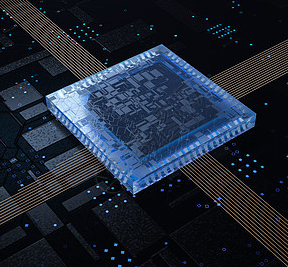In the design and application of electronic equipment, crystal oscillator, as the core frequency control component, plays a decisive role in the overall performance and accuracy of the equipment. The impact of the frequency accuracy of the crystal oscillator on system performance cannot be ignored, but in practice, the frequency of the crystal oscillator often has a certain degree of deviation. These deviations not only result from differences in temperature, voltage fluctuations, mechanical stress, and manufacturing processes, but are also significantly affected by stray capacitance. The purpose of this article is to delve into the nature of crystal stray capacitance, its impact on crystal performance, and how to effectively control these effects.
The nature and influence of crystal oscillator stray capacitance
Definition of stray capacitance
Stray capacitance in crystal oscillators mainly refers to the capacitance formed unintentionally on the circuit board. This usually occurs when the insulation between wires and electronic components is imperfect or the component spacing is too small. These unexpected capacitances affect the accuracy and stability of the crystal oscillator output frequency, becoming a hidden danger that affects system performance.
Effect of stray capacitance
Stray capacitance has many negative impacts on crystal oscillator performance. They first change the loading conditions of the crystal oscillator, which in turn affects the frequency output. At the same time, the presence of stray capacitance leads to an increase in energy loss in the circuit, weakening the stability and reliability of the crystal oscillator. In addition, stray capacitance can cause harmonic interference in the circuit, further damaging system performance.

Methods to control crystal oscillator stray capacitance
Optimizing circuit board material selection
Choosing low dielectric constant materials as circuit board materials can effectively reduce the impact of stray capacitance. At the same time, improving the insulation performance of the circuit board can also help reduce the formation of stray capacitance.
Improve circuit board layout and routing
During the circuit board design stage, the placement and connection of the crystal oscillator should be fully considered. Reasonable layout and trace design can reduce the coupling capacitance between the crystal oscillator and other components, thereby reducing the impact of stray capacitance. For high-frequency signal lines, shorten the line length and reduce bends as much as possible to reduce signal distortion and interference.
Add decoupling capacitors
Adding appropriate decoupling capacitors around the crystal oscillator can effectively reduce noise on the power supply and ground lines, thereby reducing the impact of stray capacitance. The selection of decoupling capacitors should be determined based on the specific needs of the circuit.
Improve the accuracy of component assembly
Improving the accuracy of component assembly helps reduce the distance and errors between components, thereby reducing the formation of stray capacitance. In addition, the use of high-stability components can also improve the overall performance of the system.
